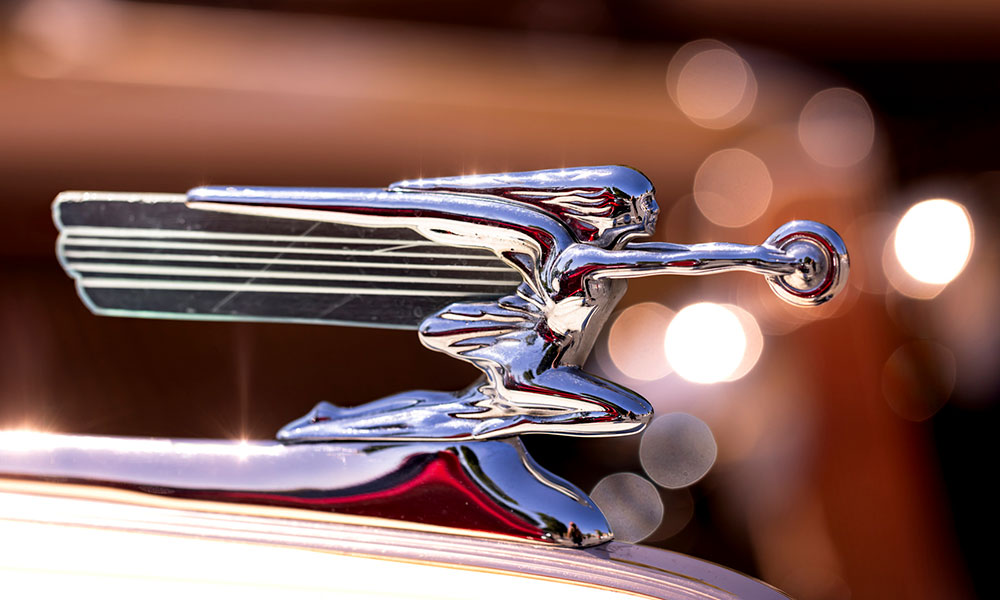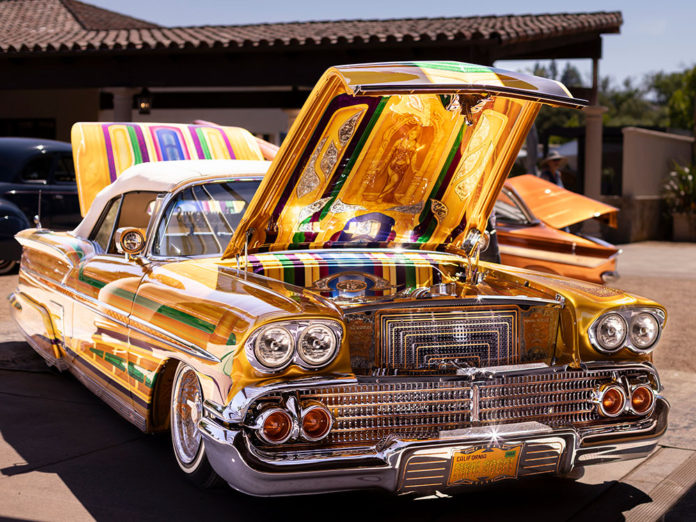
By Tenay Macmillan
My affection for lowriders started when I was old enough to stumble out of our front door, still diaper-clad, to chase after the ice cream truck’s sirens. Painted in dynamically vibrant colors that shimmered in the sun, or under the street lights that called me home for curfew, lowriders would roll slowly through our neighborhood in Los Angeles (“818 before the split”), bumpin’ and bouncin.’
So when I heard about the “Wine & Shine: Inaugural Lowrider and Classic Car Show” at Bacchus Lading on July 27, it called out to me.
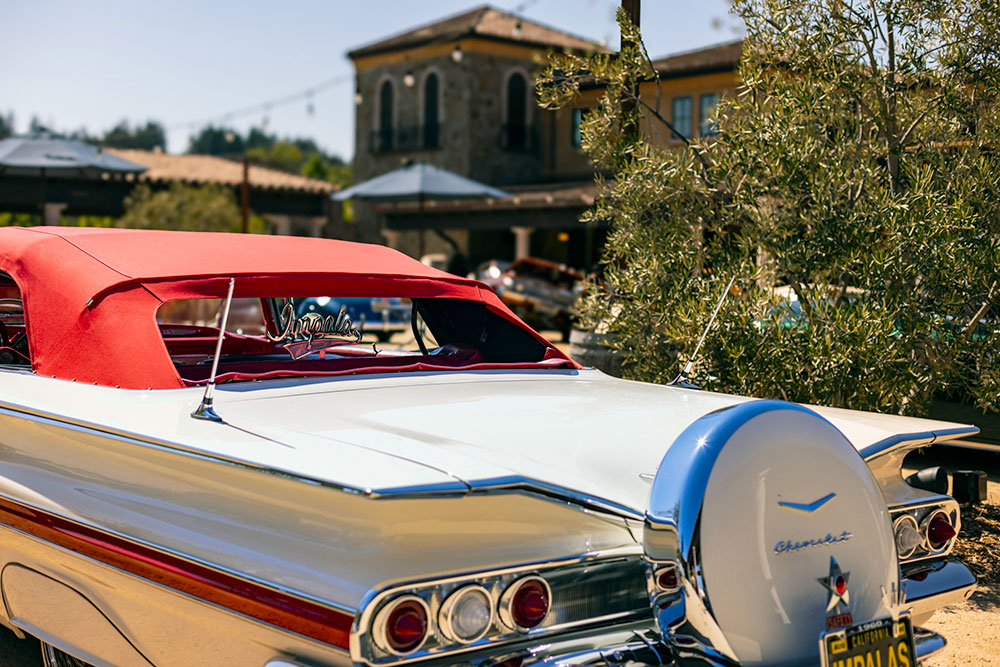
Lowriders were born out of Mexican-Americans’ desire to be visible and to own their heritage and culture in an unapologetic way. Lowriders were a response to their pressured repatriation of the 1930s and ’40s and invisible service in World War II, and a visual protest to hot rodders’ lifted cars. Art as resistance: Mesmerizing metallics and geometric patterns demanded every passerby’s attention. They were museum pieces on four wheels, often passed down within the family through generations.
Originally, lowriders used weights, bricks and even cement blocks in their trunks to achieve that signature dip. Then, in 1958, California passed CVC section 24008, to restrict how low cars could be in relation to the bottom of their wheel rim. It was seen as a targeted attack against the community.
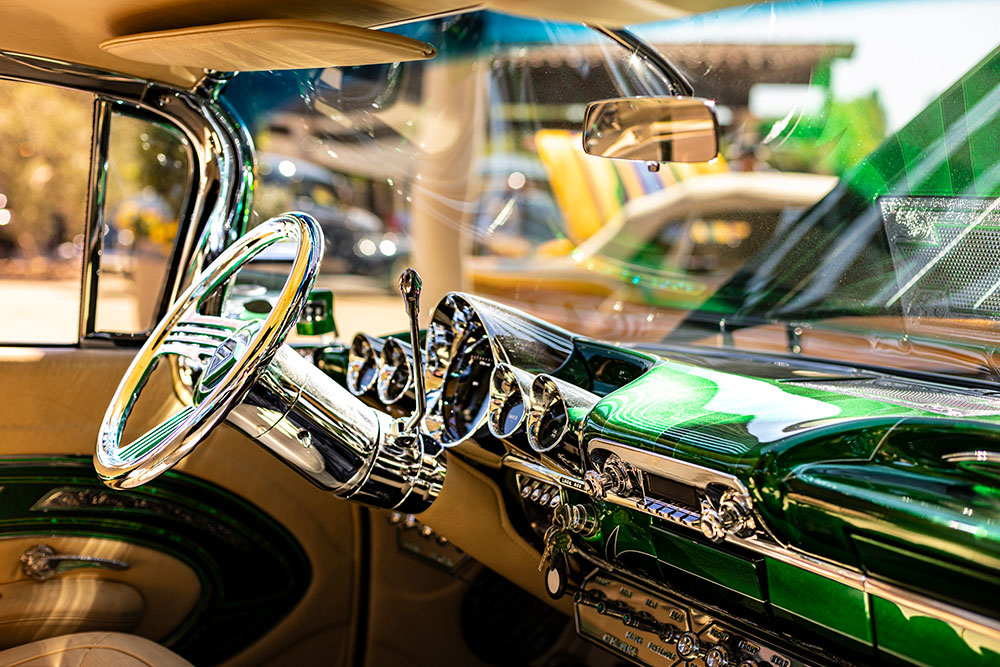
Ever clever and rebellious, Lowriders began installing hydraulics in their low-and-slows, so at the flick of a switch, “Nothing to see here, Officer.”
During the Chicano Rights movements of the ’70s, Lowriders and their car clubs assumed more direct political and human rights roles such as fundraising for Labor Unions, health protections and community outreach programs. Community outreach became integral to Lowrider identity.
My family was a jigsaw of Latin countries, including Mexico, but Peruvian traditions had the strongest hold on us, so we appreciated lowriders from the periphery and through the ever present Lowrider Magazine. Its eye-catching covers boasted intimidatingly perfect Latinas, somehow standing fiercely in six-inch stilettos, against the gleaming metal backdrop of lowriders.
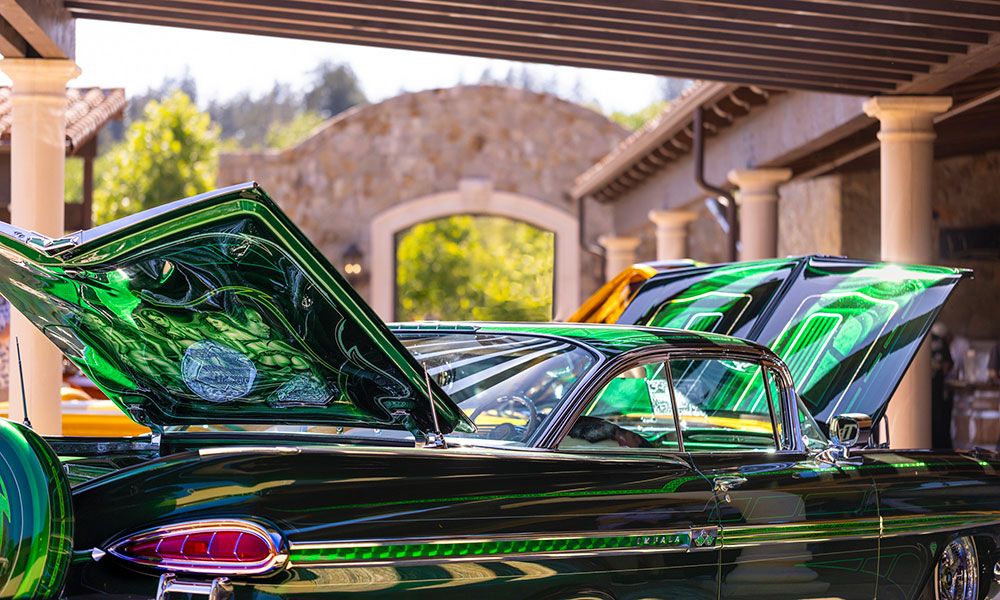
It was an exception to see Latinos in a publication, so I always looked for it, even if my mom rarely let me bring one home. My mom was a shutterbug, and gave me my first 35mm film camera when I was 6 years old. She could appreciate the artistry of the car images, but she had also been a model for a short while and that experience led her to restrict most bikini-clad images from entering our home—superheroes being the exception.
In 1988, California responded by passing a measure that banned lowriding and cruising.
A year after the ban, we were transplanted to a homogenous suburb in Silicon Valley. Far away from most of my extended Latino family and any lowrider cruising boulevard, seeing Lowrider Magazine at my local 7-Eleven felt like a portal to home. It made me feel seen.
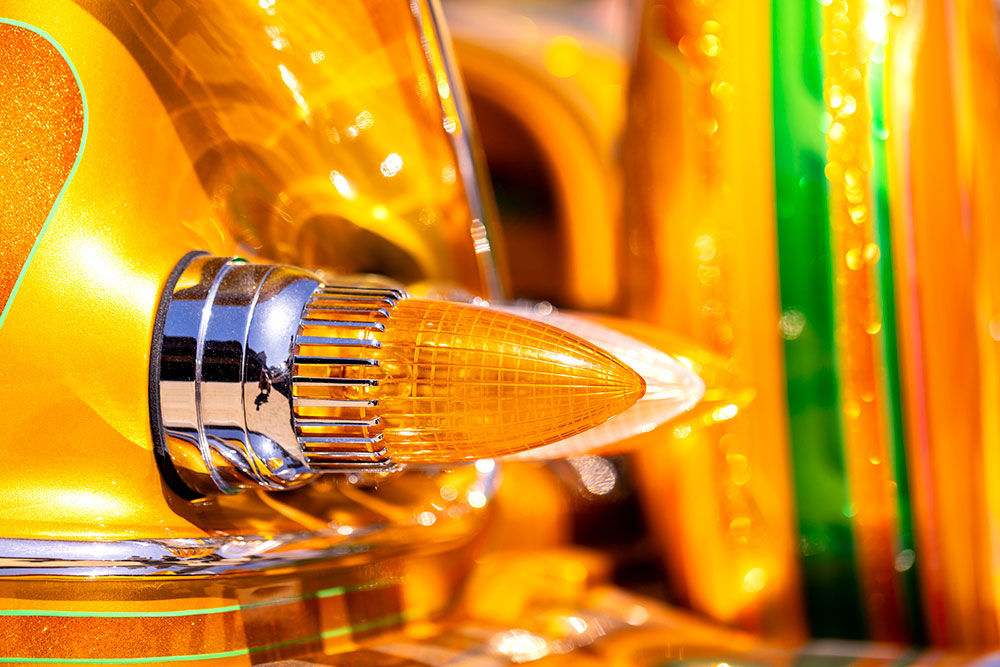
The show
Bacchus Landing’s Mediterranean architecture and masonry created lovely backdrops for the cars, but I had no idea that Lowrider royalty sat at the helm of this show. Monica Lopez, proprietor of Aldina Vineyards and Bacchus Landing, was the daughter of Alberto Lopez, part of the trio who had re-birthed Lowrider Magazine from a defunct publication and catapulted it to cult status. He was inducted into the Lowrider Hall of Fame in 2010 with the Visionary Award. Having had this knowledge beforehand, I would have scheduled my day differently.
The exterior parking lot was filled with gorgeous lowriders and classics, with several food trucks off to the far side. When I walked into the interior courtyard, I found a “lowrider museum.” Many of these cars had been in actual museums and exhibits, and featured in numerous publications ranging from the car-centric to the Smithsonian.
Chris Roark’s Final Score, a 1958 Chevy Impala which had been featured on the cover of MotorTrend Magazine after earning its third Lowrider of the Year title, stood as a centerpiece in the courtyard. Its rainbow geometry on glimmering gold drew me to it like a magnet. Roark has a long history of creating title-winning lowriders under his business of C&C Customs, earning him Builder of the Year from National Roadster Shows in 2024.
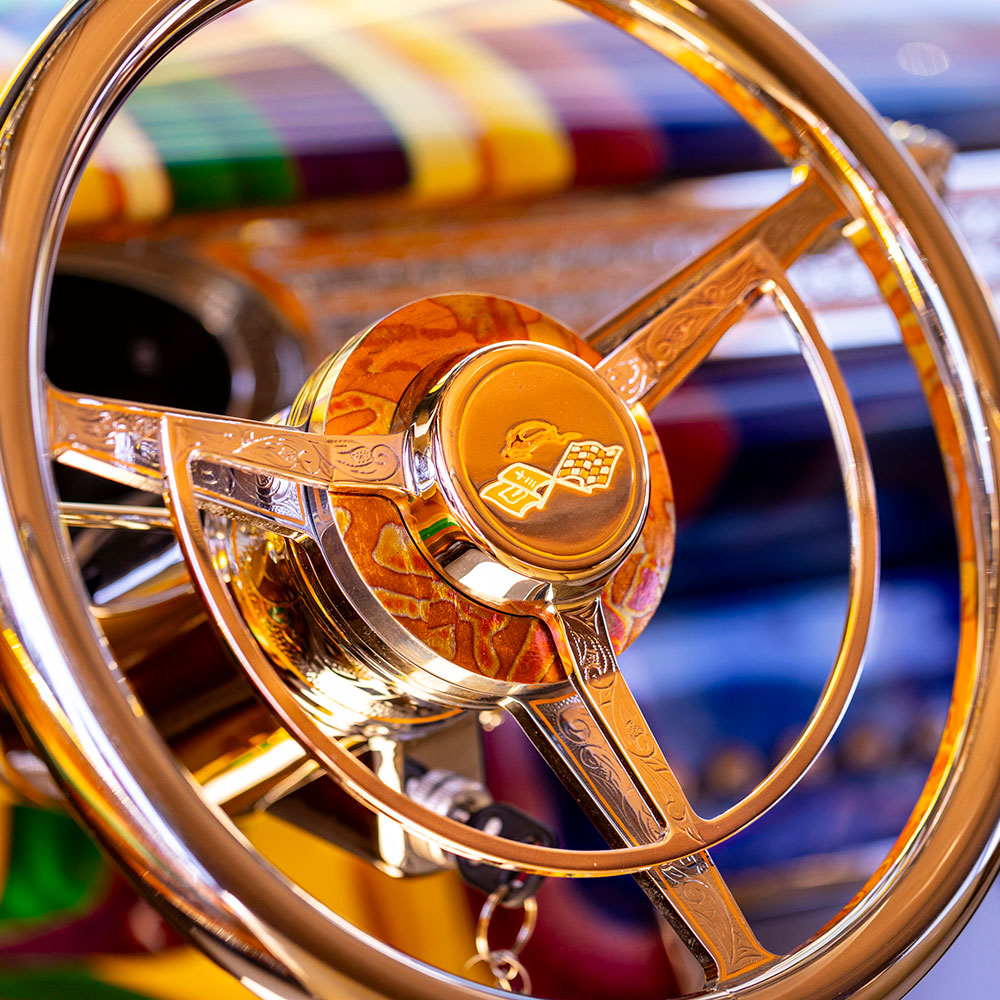
Krypto9, a 1959 Impala owned by Angel Gomez, was appropriately angled next to Final Score. This emerald-green dream machine earned Impala Magazine’s Car of the Year Award in 2023.
I knew I did not have enough time to capture even these two immaculate pieces of art, let alone the dozen other beauties in the courtyard, but I tried. One of the others that I barely captured was Bill Llamas’ Pocos Locos, a 1940 Chevrolet Business Coupe that served as a centerpiece of Sonoma County Museum’s “Cruisin’” exhibit last year.
“Creating the Wine & Shine Lowrider and Classics car show was very much an intentional way to celebrate and elevate Mexican-American heritage and culture within the wine industry,” Monica Lopez told me later.
“The wine industry has long benefited from the contributions of Latinos at every level, yet that cultural presence isn’t always reflected in the public-facing side of the business,” she added. “This event is one way to bridge that gap—by creating space for cultural expression that’s authentic to us.”
Though this year’s inaugural Wine & Shine was put together in a matter of months, Lopez thinks the time is right to do it again. “Given the incredible response to the inaugural Wine & Shine, we’d love to make this an annual event,” she said. “The energy, creativity and community support behind this show has been inspiring—it’s definitely something we want to grow.”
All photos by Tenay32Creative
